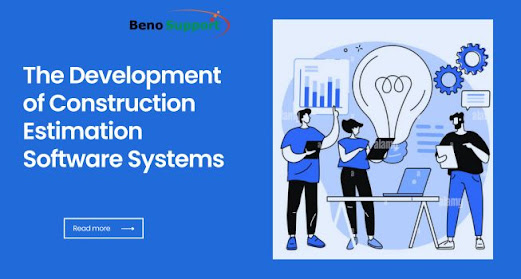The Development of Construction Estimation Software Systems
Thanks
in great part to technological improvements the construction industry has
undergone a tremendous transition recently. Development of computerized systems
for construction estimate has been one of the most significant developments.
The manner that construction projects are planned, budgeted, and carried out
has been completely transformed by these software tools. We shall examine the
development and significance of construction estimates software systems in this
post.
The Beginning
In
the past, estimating a building project took a lot of time and was prone to
mistakes. To estimate project expenses, construction professionals had to rely
on manual calculations and expertise. This frequently led to unreliable
estimations, which caused delays and budget overruns. In the latter half of the
20th century, programmers started developing building estimation software systems after realizing the
need for a more effective and precise method. The software services industry is undergoing an unprecedented
transformation.
Construction
estimation software's development
In
the 1980s and 1990s, the first building estimation software systems appeared.
Even though these early systems were primitive in comparison to the complex
software of today, they still marked a tremendous advancement. They provided
project information, such as costs for materials, labour, and equipment, to
construction industry professionals, and then generated estimates based on
predetermined algorithms.
These
software systems' accuracy and functionality increased with time. They included
databases of labour and material costs, making it simpler for estimators to get
current pricing data. The use of integration with CAD (Computer-Aided Design)
software also increased, giving estimators direct access to project blueprints
and drawings.
Artificial
Intelligence's Function
Artificial
intelligence (AI) has become increasingly important in the development of
building estimation software systems in recent years. Large-scale data
analysis, pattern recognition, and highly precise prediction are all
capabilities of AI systems. This capacity has been used to enhance building
project cost estimation.
AI-powered
construction estimation software can produce estimates with surprising accuracy
by taking into account a wide range of factors, including project size,
location, material costs, and labour expenses. These systems can also adjust to
modifications in project requirements, updating the predicted cost in real-time
as new information becomes available.
Construction
estimation software's advantages
The
construction industry has benefited from the development of construction
estimation software systems in a number of ways, including:
Accuracy: By reducing human error, these
software programmes produce more precise cost estimates. This lessens the
possibility of budget overruns and aids clients and contractors in making more
strategic planning decisions.
Efficiency: By producing estimates more quickly,
estimators can conserve time and resources. In circumstances involving
competitive bidding, this efficiency is extremely important.
Collaboration: Construction estimation software
makes it easier for project stakeholders to work together. Project estimates
can be accessed and reviewed by architects, engineers, builders, and clients,
improving decision-making and communication.
Adaptability: Construction estimation software can
quickly modify estimates to take into account new facts as projects alter and
advance, ensuring that budgets are accurate.
Historical Data: These systems also record past
information on project budgets and costs, which can be used to inform current
projects and enhance cost forecasts.
Conclusion
The
development of construction estimation software systems has transformed the
construction industry by streamlining the estimating process, increasing
accuracy, and enhancing collaboration among project stakeholders. With the
continued integration of artificial intelligence and other cutting-edge
technologies, these software systems are likely to become even more powerful
and essential in the years to come. As construction projects become
increasingly complex and demanding, the role of construction estimation
software systems will continue to grow, shaping the future of the industry and
helping to build a more efficient and sustainable world.


Comments
Post a Comment